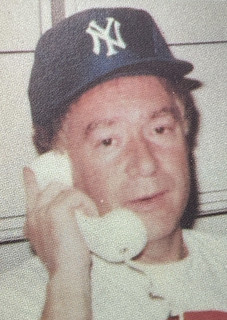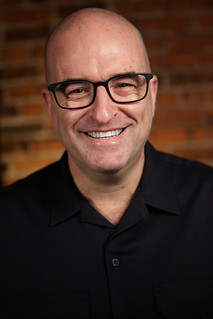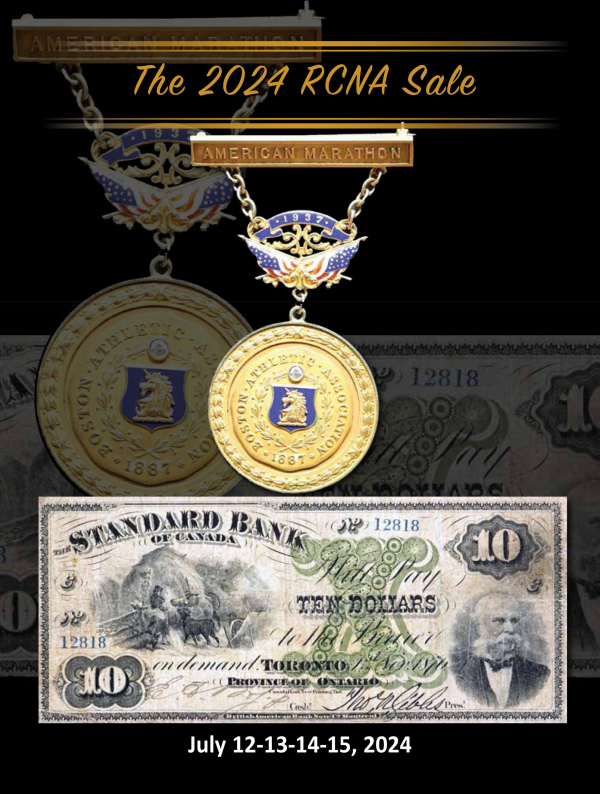
PREV ARTICLE
NEXT ARTICLE
FULL ISSUE
PREV FULL ISSUE
STAN KESSELMAN INTERVIEW, PART ONEGreg Bennick's latest interview for the Newman Numismatic Portal is with New York dealer Stan Kesselman. Here's the first of eight parts, where Stan talks about how he got started in numismatics, and dealing with Norman Stack, Harry Bass and Ted Naftzger. -Editor GREG BENNICK: Hi, everybody. I'm Greg Bennick with the Newman Numismatic Portal, and I am doing an interview today with Stanley Kesselman. I'm excited for this interview. This is going to be absolutely great, and I'm really excited to get started. So, Stan, how are you today?
GREG BENNICK: Good. That's a good start. I agree with that. I like the fact that we're all still here, so let's talk about coins. Tell me about your origins in coins. How did you get started in coins? STANLEY KESSELMAN: I went from eighth grade, and I changed schools, and I went into ninth grade at a school called New Lincoln, which was situated on 110th Street in New York City between 5th and Lenox Avenue. That's where Central Park ends and Harlem begins. So, it was a very progressive school, and in the school, in my class, they had students who were 13 years old, and they collected coins. And I knew nothing about coins. And one of the boys was named Herbie Sondheim. He had a very famous brother named Stephen. GREG BENNICK: Yeah, he did. STANLEY KESSELMAN: Yeah, he did. And Herbie collected coins, and they were the Herring brothers. They collected a set of Indian head pennies, which they must be 80 years old, and they still have the original set, they never ever will sell it. And they became art dealers in the ninth grade, and they made fortunes. They collected the Rembrandt etchings, and they never sell. They just kept it. They have things there for sixty years on their walls. They never sell. So, I got interested in coins, and I got especially interested in gold coins, because gold was better than copper. It still is. And the mintages of gold coins were much less than copper coins. So, like an 1880 quarter eagle, they made like 2,900 pieces. And a 1909 S-VDB penny, I think the mintage is 500 thousand. So, gold coins always interested me. And I bought one, and then I bought another, and then I bought another. And I went to a Lester Merkin auction. Who was a dealer in New York City, and he wouldn't let me bid, because I was under 18. So, I met a man there with a long beard, and he said he would bid for me, and his name was Walter Breen. So, that's when I first met Walter. And I bought an 1849-D quarter eagle in AU condition, like $58. So, eventually, by doing this, I ran out of money. GREG BENNICK: (Laughs) STANLEY KESSELMAN: But I had an advantage over a lot of people, because a lot of people were married. I'm 17 years old, and they had expenses. I lived at home. I had no expenses. So, my availability for coins, money-wise, was probably equal to somebody, you know, 30, 40 years old in a business. He had to send his kids to college. He had to pay rent. I had no expenses at all. My father never charged me for food. So, I ran out of money, and I sold all my coins. Then I went to another Lester Merkin auction, and he had an 1884 $20 gold piece in proof. And I paid $6,700 for it, and that was my total capital. I had one coin, and I took it home, and then I got very bored. GREG BENNICK: What year was this? STANLEY KESSELMAN: I would say 1967, 1968, something like that. Maybe early….no, it was earlier. Maybe 57. I can't remember. I was born in 44, so 17 and 44 is 61. All right. So, I had the one coin, and I'm out of the coin business, because I couldn't buy anything else. So, I went into Stacks. I was friendly with Norman Stacks. I was friendly with Harvey Stacks. I was friendly with Ben Stacks, and I knew their parents, Morton. And I said I had an 1884 $20 gold piece in proof, and Norman takes out his wallet, picks out a card, and he has around 20 coins on his want list, and this was one of them. So, I gave him the coin to sell, and I made $300 on it. So, now, I had $7,000, and I'm back in business. And I just kept on doing that kind of thing. GREG BENNICK: That's amazing. Now, you never had a store throughout the years that you were dealing. You always worked in private sales. Isn't that right? STANLEY KESSELMAN: I never had a store because I'm 18 years old and I went to college at Syracuse. I'm up in Syracuse for four years. Then I went to law school at Fordham and then I went to law school at NYU. I was never a full-time coin dealer. But at the time when I was active, there wasn't much competition. There were maybe three people in the country who would buy gold coins for inventory. No one else would. There were Brownlee and Rowe in Dallas, Texas. They had much more capital than I did. And they were competition. The other competition was collectors themselves would go to auctions and put things together. And that is where you met your future customers who was at auctions because you bid against them and they come over to you. If you won, they say how much you want for the coin. And if they won the coin, you introduce yourself. So that's how I met Harry Bass and a lot of other people. Ted Naftzger put together a collection of 20s. He had a lot of money and bought a lot of coins from Abe Kosoff. And he ended up with a lot of proof coins. And his family had an oil company in California. And eventually Chevron bought it. And he had a lot of Chevron stock. And he was an amazing person. He flew his own airplane. He raised cattle. And he had his own island off of California that he owned to raise the cattle. Yeah. And his main passion was large cents. He loved large cents, new varieties. And he always improved his large cents and he always improved his $20 gold coins. And I remember I was at Syracuse. I had an 1863-S $20 in uncirculated condition, which was rare back then because there was no shipwrecks for the coins. And I sold him an 1863-S $20 in uncirculated for maybe, I don't know, $250. And he gave me his EF coin back for maybe $45 and paid the difference back then. GREG BENNICK: Unbelievable. STANLEY KESSELMAN: Yeah. So, I had a few, I had the best customers. And they were all much older than I was, much, much richer, you know. And first time I met Harry Bass at the auction, he said he discovered a new coin. And I said, Harry, what did you discover? He discovered an 1846-D with a D over D on the back, like a double mint mark. And I said, everybody knows that exists. It's in the book. And he said, no, I discovered the $5 one. The one in the book is a quarter eagle. And that's what happened. So, I thought he was stupid in the beginning. And then I found out, then I found out he was brilliant. And he became the father to our whole generation of gold coin dealers. He taught us how to play backgammon, which he was in the Navy. And we played backgammon all night, but he loved to play for money. So, he would play for like $100 a point, which become a fortune. GREG BENNICK: Yeah.
STANLEY KESSELMAN: So, Mike Brownlee and I would play against him for $50 a point. And we're playing in New York City. And we're losing $3,000, $6,000, $9,000. He's setting it up. He's setting it up. It's about four in the morning. And finally, we win two big hands and we're up $50. So, I get up, put on my coat, and he's setting up the board. And he says, GREG BENNICK: Wow. So, he got upset. He got genuinely upset. STANLEY KESSELMAN: Yes, because he was having such fun for five hours. And after five and a half hours, he was losing. And it gave him no time for revenge. I was just happy to get out of there. You know, with $25, it was a miracle. GREG BENNICK: That's amazing.
To watch the complete video, see:
To read the complete transcript, see:
Wayne Homren, Editor The Numismatic Bibliomania Society is a non-profit organization promoting numismatic literature. See our web site at coinbooks.org. To submit items for publication in The E-Sylum, write to the Editor at this address: whomren@gmail.com To subscribe go to: https://my.binhost.com/lists/listinfo/esylum All Rights Reserved. NBS Home Page Contact the NBS webmaster 
|


